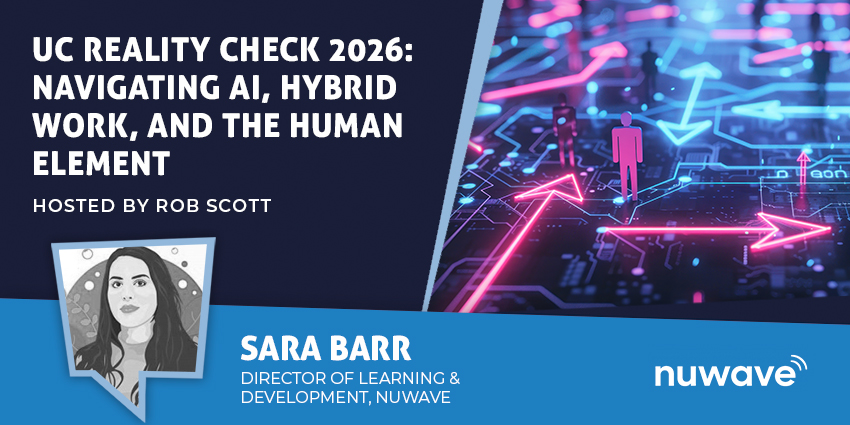Throughout 2023, the dominant focus in artificial intelligence discussions was often on theoretical and ethical considerations. However, when it comes to practical implementation, the Customer Experience and Contact Centre sector emerges as the natural landing ground for the ‘AI invasion.’ This arena provides a unique opportunity to deploy AI technologies, yielding significant performance gains with minimal risk.
As we enter 2024, the narrative shifts from the development of AI to compelling deployment stories.
“Professor Erik Brynjolfsson forecasts 30-35% performance improvements in contact centers, and I tend to agree strongly,” says Martin Taylor, Co-Founder and Deputy CEO of Content Guru.
“There’s now plenty of room to make contact centre and CX work processes much more efficient, and once some start doing that, not doing it will suddenly start appearing anachronistic.”
Taylor splits AI use cases in CX into three: Before, during, and after the interaction.
Before the Call
Before the interaction with a human agent takes place, the focus lies on optimizing efficiency during wait times, particularly when it comes to voice handling.
“In today’s omni-channel world, AI’s productivity gains shine in voice interactions, since that’s where the most inefficiencies lie,” Taylor clarifies.
Leveraging natural language processing, AI can delve into the ‘who is calling’ and ‘why are they calling’ aspects before reaching the end of the queue.
“Unlike traditional IVR, the use of AI before the call encourages customers to freely express themselves, surpassing predefined paths,” Taylor explains.
Fostering insightful analysis, segmentation, and prioritization, this transforms the experience for agents and customers alike.
“In cases where a customer is merely calling for an update, we can even opt for full automation to let them know of their status,” Taylor notes.
“In other cases, this pre-call identification can be used to make the interaction with the agent significantly more efficient, with all the stock information captured in advance.”
During the Call
In the ‘during’ phase, AI offers substantial gains; and once more, the most significant gains are in voice interactions.
“AI can listen to both parties in real-time, providing invaluable support to agents,” Taylor explains.
“This includes locating relevant knowledge articles instantly, tailored to the caller’s needs, thereby minimizing the need for agents to navigate various tabs.”
Beyond efficiency gains, an AI-driven approach can reduce agent training time.
“Training programs, often spanning 12 weeks, can potentially be streamlined to two to four weeks,” he suggests.
“The emphasis shifts from agents needing to memorize information to AI assisting in real-time, fostering a more knowledgeable and capable frontline.”
Addressing concerns about information accuracy, Taylor reassures:
“We can narrow the information sources used by the AI to reduce the scope for potential hallucination, as well as allow agents to access the original material to ensure a reliable information flow.”
Two other intertwined capabilities supported by AI during the call are transcription and translation. Once AI has listened to the call, it can also transcribe; and once transcription has taken place, it can translate what has been said.
“This effectively means that an agent can quickly understand what a caller speaking a different language needs without the help of a mediator. Then, using text to speech, they can also answer them,” Taylor says.
Transcription capabilities can also automate form filling, liberating agents to focus on more human-specific areas like dialogues, problem-solving, and building trust.
“The information collected can then be applied in different CRMs and other systems of record, ultimately creating a situation where all the agent has to do is to review what’s been done.”
After the Call
Post-call activities center around ‘auto wrap,’ automated CSAT generation, and AI-powered audits.
“AI call summarization quickly condenses extensive conversations into concise formats, which can significantly enhance work efficiently,” Taylor says.
When it comes to automated CSAT, AI can provide the organization with the same types of information that surveys would, based on sentiment and linguistic analysis.
“When surveying customers, you will very seldom get even a 5% response rate, and there’s always the risk of annoying them,” Taylor notes.
With AI producing an automated CSAT, the organization can calibrate this against the 5% of real surveys they get back, using insights for coaching and improvement.
Finally, AI can be used for quality and compliance audits, traditionally reliant on random sampling.
“Now, benefiting from AI’s guidance, auditors can be directed to relevant cases,” Taylor explains.
AI in CX: Allowing Humans to Shine
All these AI-based applications enable organizations to streamline processes and ultimately, to empower human strengths.
“The integration of AI in CX ensures that humans can focus on what they excel at: problem-solving, understanding, empathy, and trust-building,” Taylor concludes.
As organizations seek to build trust among their customers, this symbiotic relationship between AI and human capabilities becomes paramount.
“These practical examples demonstrate the tangible impact of AI technologies in enhancing customer experiences, and I believe we’ll see more and more of them in the near future.”
To learn more about Content Guru’s AI-enabled CX solution, storm®, visit their website.







